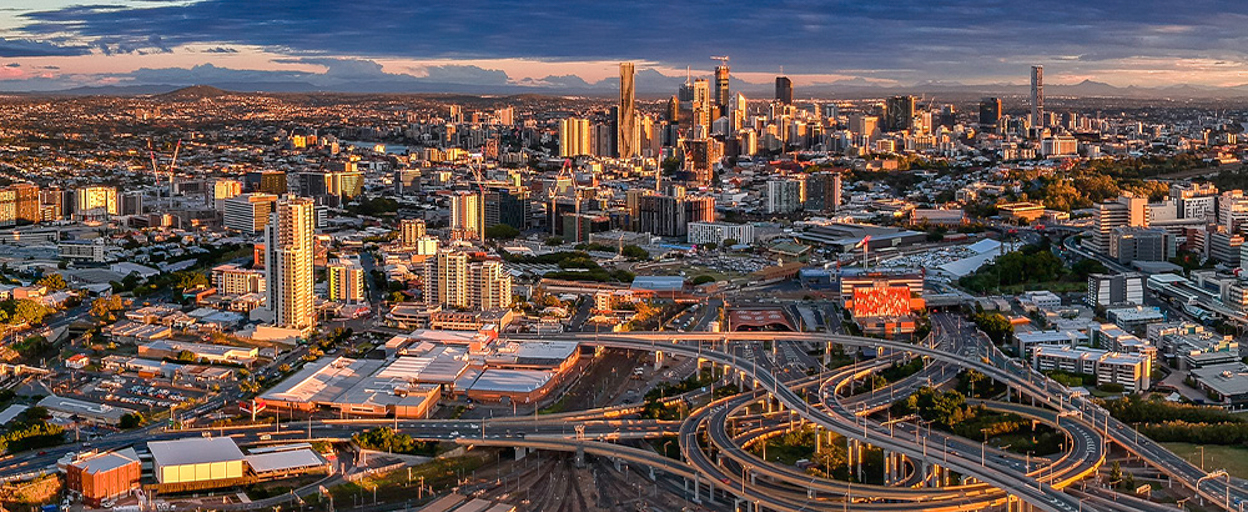- 09 Aug 2020
- 6 min read
- By James Hawes
Brisbane CBD vacancy rates spike after COVID-19
REIQ's Vacancy Rate Report for the June quarter is here, and it's alive with insights. One of the more eye-catching figures is the inner Brisbane vacancy rate of 3.9%, representing a considerable jump of 1.2 percentage points since the March quarter. Middle Brisbane was also up to 2.4% from 1.8% - less eye-watering, but significant nonetheless.
Looking at the region more granularly - by postcode - gives a clearer indication of what's happening. Brisbane CBD, or postcode 4000, saw an increase from 5.89% in March to 12.86% in June - more than doubling in just one quarter. Across the river in South Brisbane, postcode 4101, the June figure was 8.84%, again more than doubling its March rate of 4.26%. Similar increases can be found in New Farm - 4005 (1.83% to 3.12%), Fortitude Valley - 4006 (3.83% to 7.47%) and Woolloongabba - 4102 (2.78% to 5.33%).
Meanwhile, Brisbane's middle ring suburbia has barely been affected at all. Carindale - 4152 increased marginally from 1.57% to 1.69%, Aspley - 4034 was unchanged at 1.34% and Ascot - 4007 managed to decrease from 2.99% to 2.90%.
This result isn't exclusive to Brisbane's CBD. Sydney's vacancy rate for the month of June was 13.8% and Melbourne's was 8.8%. Meanwhile, Melbourne Southbank's vacancy rate was at a jaw-dropping 16.2%. Clearly COVID is having a massively disproportionate effect on capital city CBDs. The question is why?
A root cause analysis
SQM Research CEO Louis Christopher believes many factors are contributing to the discrepancy. Perhaps the largest of which is students leaving the CBD en masse. As a result, students who were coming from regional or suburban areas to rent near campus no longer have any need to. Additionally, borders are closed to international students who would normally make up a significant portion of central Brisbane's student tenants. "We don't know the exact number of how many vacancies are made up of students," says Christopher. "But we estimate it's a fairly large proportion."Other factors at play are remote working arrangements and a lack of migration. "We're seeing a rise in remote living and working, as well as people generally wishing to get away from the city due to coronavirus," Christopher explains. "Additionally, last year we had about 230,000 net migrants come to Australia, this year the recent budget estimate was about 30,000." Generally, says Christopher, migrants gravitate towards the CBD first before later looking to purchase property outside of the city.
On top of all this, casual and part time retail and hospitality jobs have seen significant cuts - many of which came within the CBD. Such jobs would normally be filled by young people and/or students as a means of affording inner Brisbane rents. "We're effectively seeing a mass exodus of young people from the city," says Christopher.
This idea is further supported by the fact regional vacancy rates are tightening significantly. Caboolture's is down to 0.8% from 1.2% last quarter, Ipswich saw a decline to 1.9% from 2.0% and Redcliffe reached 1.6% down from 2.0%. Living and working remotely is a trend Christopher believes will continue to be popular even after COVID has passed. "There's going to be a fairly high proportion that's going to remain remote living," he says. "Employers will encourage it because they get to save on office space requirements, therefore saving on rent."
Good news for tenants
As always, high vacancy rates result in what's known as a renters' market. Conditions become favourable for those still wanting to live in the CBD, because they hold bargaining power over owners. What we've seen already is a significant drop in asking rents - and not just in Brisbane's CBD. "The 12-month change for units in Brisbane are down 7%, Sydney's are down 18% and Melbourne's are down 22.8%," notes Christopher. "I've never seen these types of numbers in my career." As a result, it's possible we'll end up in a situation where rents in the CBD are cheaper than those in the inner suburbs. This is because all the factors contributing to rising vacancy rates in the city have a far smaller effect on suburban rentals.Despite a situation where CBD rents are cheaper than suburban ones, Christopher can't imagine too many people moving to take advantage of that. "Do you really see a mother and father with two children - a standard family - leaving their home to live in the inner city area?" he asked. "Some people will be enticed, but families will be looking to stay away from the CBD."
Getting back to 'normal'
With sky-high vacancy rates and steep drops in asking rent, the question becomes how far away normality is. So long as restrictions remain in place, it's unlikely Brisbane CBD vacancy rates will tighten. The coming months will show if the shift has levelled out for now, or if it will continue to worsen. The silver bullet now is the potential advent of a vaccine. "The prompting of a vaccine could create a very quick turnaround in current sentiment," he predicts. "The problem is we just don't know when it's coming."Once a vaccine is found and distributed, Christopher believes we'll see a rapid return to normality in the residential rental sector. "If the international borders were open and the Federal Government really put the accelerator on, there could be a reversal within 90 days," he says. "They'd want to encourage overseas arrivals and international migration as much as possible as a way to get the economy out of its current recession. It could be super fast." The only potential sticking point would be diplomatic relations with China - a country from which Australia historically received a lot of international arrivals. "It might not be such a massive reversal because of the questions surrounding Chinese international students," warns Christopher. "There are some serious question marks on that."
It's important to keep in mind that this is a very localised phenomenon. The Brisbane LGA represents just 24% of Queensland's population, and the highly-affected postcodes comprise a smaller percentage still. Additionally, over a third of Queenslanders are tenants, so there will always be a strong rental market in our State. While Brisbane's CBD is currently being hit hard, looking at the big picture of Queensland helps keep perspective. Outside of our capital, the rental market is remarkably tight, suggesting the weak Brisbane market is a result of renters moving, rather than dropping out of the market altogether.
REIQ Members can access the latest vacancy rate report via the members portal. To receive a copy of the REIQ's quarterly vacancy rate report, become a member today. And to receive more property market insights and content, subscribe to the REIQ Journal or Property Management Update here.
Interested to learn real estate ? Get updates on real estate news here.
Interested to learn real estate ? Get updates on real estate news here.
You might also like
View All Articles
View All Articles


Start your Real Estate Career
Need help? 1300 697 347 or contact us




